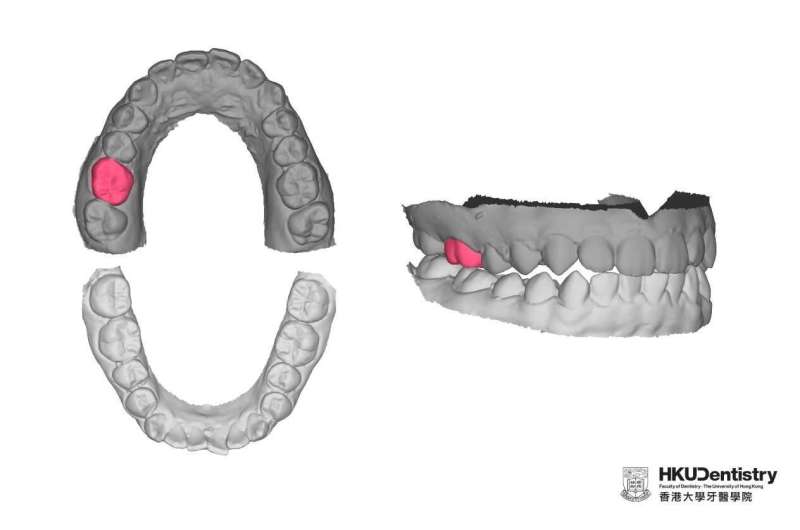AI-designed single molar dental prostheses

Loss of permanent teeth is usually caused by dental diseases or trauma and is common in the global population, especially among the elderly due to aging and relatively poorer oral health.
Failure to replace a missing tooth not only affects facial aesthetic and chewing function, but it may also lead to jawbone loss and shifting to teeth, which may cause malocclusion and bite irregularities that could have a significant impact on the health of the remaining teeth, gums, jaw muscles and jaw points.
Artificial teeth, also known as bridges and dentures, are prosthetic devices used to replace missing teeth. It is essential for the false teeth to resemble the patient's original tooth so that the patient can retain his or her original appearance, chewing function, oral and physical health.
Currently, the process of designing and creating dentures is highly time-consuming as the existing computerized design process requires tedious manual inputs, teeth occlusion information collection as well as multiple denture fitting procedures due to limited accuracy of exciting technologies.
Researchers from the Faculty of Dentistry at the University of Hong Kong (HKU) and the Department of Computer Science of Chu Hai College of Higher Education, collaborated to develop a new approach using artificial intelligence to automate the design of individualized dentures, in order to enhance the treatment efficiency and improve patient experience.
The AI technology used in the process was based on 3D Generative Adversarial Network(3D-GAN) algorithm and tested on 175 participants recruited at HKU. The study shows that AI technology could reconstruct the shape of a natural healthy tooth and automate the process of false teeth design with high accuracy.
"The 3D GAN algorithm was selected due to its superior performance on 3D object reconstruction compared to other AI algorithms. In the preliminary study, 3D GAN was able to rebuild similar shapes to the original teeth for 60% of the cases. It is expected to mature with more AI training data," co-investigator Dr. Reinhard Chau explained.
The new approach only requires the digital model of a patient's dentition to function. It can learn the features of an individual's teeth from the rest of the dentition and generate a false tooth that looks like the missing tooth.
"This will facilitate the treatment workflow for dentists in replacing a missing tooth, as the preparation and fitting process will require minimal time, and a patient will not need to stay at the clinic for long hours," said Principal Investigator Dr. Walter Lam.
The study, titled "Artificial intelligence-designed single molar dental prostheses: A protocol of prospective experimental study," is published in the journal PLOS ONE.
More information: Reinhard Chun Wang Chau et al, Artificial intelligence-designed single molar dental prostheses: A protocol of prospective experimental study, PLOS ONE (2022). DOI: 10.1371/journal.pone.0268535




















